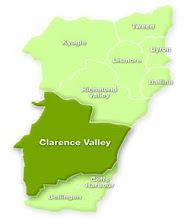It appears Scott Morrison & Co did not listen to this open letter.
Corresponding
authors:
Chris
Edmond (cedmond@unimelb.edu.au)
Steven
Hamilton (steven_hamilton@gwu.edu)
Richard
Holden (richard.holden@unsw.edu.au)
Bruce
Preston (bruce.preston@unimelb.edu.au)
The
views expressed are those of the signatories and not necessarily
those of their employer.
19
April 2020
Dear
Prime Minister and Members of the National Cabinet:
The
undersigned economists have witnessed and participated in the public
debate about when to relax social-distancing measures in Australia.
Some commentators have expressed the view that there is a trade-off
between the public health and economic aspects of the crisis. We, as
economists, believe this is a false distinction.
We
cannot have a functioning economy unless we first comprehensively
address the public health crisis. The measures put in place in
Australia, at the border and within the states and territories, have
reduced the number of new infections. This has put Australia in an
enviable position compared to other countries, and we must not
squander that success.
We
recognise that the measures taken to date have come at a cost to
economic activity and jobs, but believe these are far outweighed by
the lives saved and the avoided economic damage due to an unmitigated
contagion. We believe that strong fiscal measures are a much better
way to offset these economic costs than prematurely loosening
restrictions.
As
has been foreshadowed in your public remarks, our borders will need
to remain under tight control for an extended period. It is vital to
keep social-distancing measures in place until the number of
infections is very low, our testing capacity is expanded well beyond
its already comparatively high level, and widespread contact tracing
is available.
A
second-wave outbreak would be extremely damaging to the economy, in
addition to involving tragic and unnecessary loss of life.
Sincerely,
On the day this open letter was written the number of active confirmed Covid-19 cases in Australia was falling - averaging 42 cases a day in that week. However, nationally there were still est. 2,306 active & not yet recovered cases of the virus and the death toll had reached 70 people.
By 20 April 2020 national infection growth rate - which needed to be below a factor of 1 if Australia wanted to maintain suppression or eliminate the virus - was recorded as 0.89 representing an average of 11 new cases per day for the last 7 days.
By 2 May 2020 active & not yet recovered cases had fallen to 901 but deaths had risen to 93 people.
That week Prime Minister Scott Morrison began to push for an easing of COVID-19 public health order restrictions.
However by 20 May Australia was averaging 17 cases per day and the infection growth rate was beginning to climb again.
Even though the national infection growth rate had been above a factor of 1 since early June, the Morrison Government continued to push for a rolling back of public health order restrictions and castigated those states, industry sectors and workers which it thought were not responding quickly enough to its desire to 'open the economy'.
In varying degrees the states and territories complied. The result?
By 3pm on 8 July 2020, there were 1,293 active & not yet recovered cases of COVID-19 in Australia and 106 deaths.
As of 3 pm on 29 July the national number of active & not yet recovered COVID-19 cases stood at est. 5,787 and known deaths from the virus totalled 176 people. That day the Australian Dept. of Health recorded there has been an average of 385 new cases reported each day over the last week.
It is now Friday 31 July 2020 and the resurgence of COVID-19 infection predicted by those 289 economists last April is underway.








